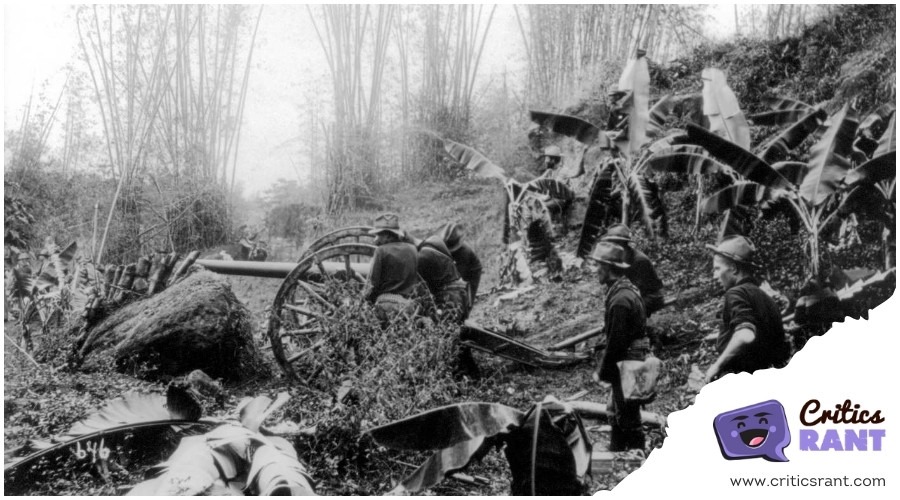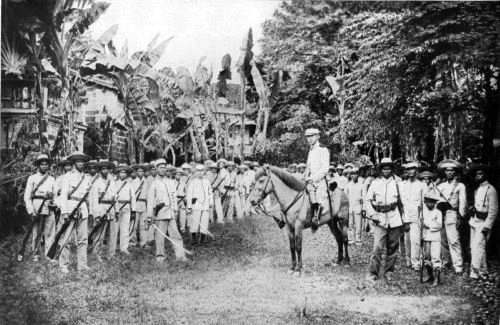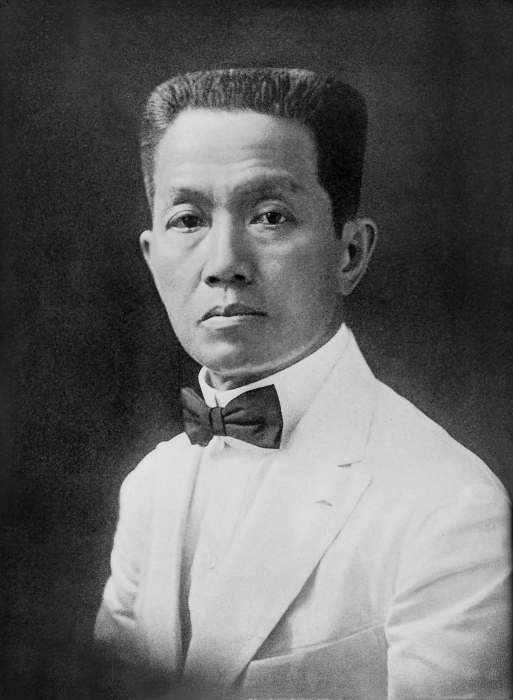The Filipino-American War (1899-1902), an often-overlooked conflict in history books, played a crucial role in shaping the political landscapes of both the Philippines and the United States. Despite its significant impact, the war is seldom featured in mainstream cinema. In this article, we will explore some of the top movies that delve into this tumultuous period, shedding light on a critical chapter of both nations’ histories through the lens of film.
These movies offer a unique perspective on the complexities of war, colonial ambitions, and the resistance of the Filipino people. They not only entertain but also educate, providing viewers with insights into the cultural and historical contexts of the late 19th and early 20th centuries. The films selected for review have been chosen based on their historical relevance, cinematic quality, and the depth with which they explore the themes of the Filipino-American War.
Historical Context of the Filipino-American War
Overview of the Main Events and Figures During the War
The Filipino-American War, which erupted in 1899 shortly after the Spanish-American War, marked a pivotal conflict between the United States and Filipino revolutionary forces. Initially, the conflict began as a struggle for independence from Spanish rule, but it quickly morphed into a bitter and violent campaign against American colonization after the Treaty of Paris, where Spain ceded the Philippines to the United States. Key figures such as Emilio Aguinaldo led the Filipino forces, advocating for sovereignty and self-governance, while American military leaders like General Arthur MacArthur were tasked with suppressing the Filipino resistance.
Discussion of the War’s Repercussions on Filipino and American Societies
The war had profound effects on both societies. In the Philippines, the conflict resulted in significant loss of life and property, deeply impacting societal structures and contributing to a long-standing mistrust of foreign interventions. The war also catalyzed the formation of a Filipino national identity and sparked subsequent movements for independence. On the American side, the conflict led to a contentious debate about imperialism and the role of the United States as a global power. It challenged American values and principles, particularly those concerning liberty and self-determination, creating a paradox that prompted reflection and criticism within the U.S. itself.
How These Events Have Been Represented or Overlooked in Mainstream Media and Cinema
The representation of the Filipino-American War in mainstream media and cinema has been sparse and often overshadowed by America’s other military engagements. Films and documentaries focusing on this war are rare, and when they do exist, they tend to either highlight the American perspective or simplify the complexities of the conflict.
The war is typically portrayed as a minor skirmish within the larger narrative of American imperialism rather than as a significant event in its own right. This oversight can be attributed to both the niche interest in the conflict in broader historical discourses and a reluctance to confront the darker aspects of colonialism. However, a few works have attempted to bring more balanced views, exploring the deep impacts and lasting scars left by the war on the Filipino psyche and society.
Movies Set During the Philippine-American War
Wars invariably claim significant chapters in world history, and films that depict these conflicts offer glimpses into the harrowing realities of those tumultuous times. If you’re interested in exploring the seldom-discussed Philippine-American War, our curated list of movies provides a thoughtful selection that brings to life the events and experiences of this notorious conflict. Whether you seek to understand the historical nuances or simply enjoy cinematic portrayals of war, these films promise engaging and insightful viewing.
Amigo
“Amigo” is a 2010 historical drama film written and directed by John Sayles. The movie is set during the Philippine-American War and offers a nuanced portrayal of the conflict, focusing on the interactions between a Filipino barangay (village) and the occupying American soldiers.
Plot Summary
The film centers around Rafael Dacanay, the Cabeza (village head) of a small Filipino village. Rafael is caught in the middle of loyalties between the American military forces led by Colonel Hardacre and the Filipino guerrilla fighters, including his brother Simón, who are resisting the American occupation. Rafael faces the impossible task of protecting his villagers from both the American attempts at pacification and the demands of the guerrillas who see the Americans as invaders. His decisions and actions reflect the complex and often heartbreaking choices faced by leaders under foreign rule and occupation.
Themes and Cinematic Elements
“Amigo” explores themes of loyalty, betrayal, and the moral complexities of war. The film is notable for its balanced portrayal of both Filipino and American perspectives, avoiding one-dimensional stereotypes. It delves into the cultural and personal ramifications of colonial occupation and resistance, showing how ordinary lives are disrupted by geopolitical conflicts. John Sayles uses a mix of Tagalog and English, enhancing the film’s authenticity and emotional depth. The cinematography captures the lush, tropical landscapes of the Philippines, which contrasts sharply with the brutality of the conflict.
Reception and Impact
“Amigo” received mixed to positive reviews from critics, with particular praise for its historical accuracy and the depth of its character development. It contributed to a broader discussion about the Philippine-American War, a topic that has been relatively underrepresented in cinema. The film invites viewers to reflect on the less familiar aspects of American imperialism and the long-term effects of colonialism on the Philippines.
Heneral Luna
“Heneral Luna” is a 2015 Filipino historical biopic film directed by Jerrold Tarog. It portrays the life of General Antonio Luna, a fiery and uncompromising Filipino military leader known for his efforts to fend off American colonization during the Philippine-American War. The film is notable for its vivid storytelling and its focus on a crucial yet turbulent period in Filipino history.
Plot Summary
The movie follows General Antonio Luna as he leads the Philippine Revolutionary Army against American forces. Known for his strong-willed and sometimes abrasive personality, Luna struggles not only with the external enemy but also with internal divisions within the Filipino revolutionary government. His fierce advocacy for Philippine independence puts him at odds with fellow officers and politicians who have differing views on how to achieve sovereignty or are tempted by personal gains.
Themes and Cinematic Elements
“Heneral Luna” delves into themes of patriotism, betrayal, and the internal conflicts that can undermine a nation’s fight for freedom. The film is praised for its rich character development, particularly of Luna, who is portrayed as both a hero and a flawed individual. The cinematic style blends historical drama with moments of humor and intense emotion, making it both an educational and engaging watch. The film’s use of the Filipino language, period-accurate costumes, and detailed set designs contribute to its authenticity and immersive experience.
Reception and Impact
Upon its release, “Heneral Luna” became a critical and commercial success in the Philippines and garnered international attention. It sparked renewed interest and debate about national identity and the historical narrative of the Philippine-American War. The film’s portrayal of Luna challenged the traditional hero-villain dichotomy often seen in historical films, presenting a more nuanced view of leadership and patriotism.
Tirad Pass: The Story of Gen. Gregorio Del Pilar
“Tirad Pass: The Story of Gen. Gregorio Del Pilar” is a 1996 Filipino historical war film directed by Carlo J. Caparas. The film chronicles the life and heroism of General Gregorio del Pilar, one of the youngest generals in the Philippine Revolutionary Forces during the Philippine-American War. Known for his bravery and strategic prowess, Del Pilar played a pivotal role in one of the most celebrated last stands in Philippine history at the Battle of Tirad Pass.
Plot Summary
The movie focuses on the final days of General Gregorio del Pilar, leading up to the Battle of Tirad Pass. This engagement is famously remembered as a valiant yet tragic stand where Del Pilar and a small contingent of Filipino soldiers faced off against a much larger American force in an effort to delay the Americans and ensure the escape of President Emilio Aguinaldo. The film portrays Del Pilar not just as a military leader but as a passionate young man dedicated to the cause of Filipino independence. His leadership during this critical confrontation is both highlighted and humanized, showing his courage and the immense pressures faced by someone so young.
Themes and Cinematic Elements
The film explores themes of sacrifice, nationalism, and the harsh realities of war. Del Pilar’s youthful idealism and tragic fate are central to the narrative, reflecting the broader nationalistic fervor and the somber consequences of the war. The movie employs dramatic storytelling and intense battle scenes to convey the emotional and historical weight of the events. It uses the rugged landscapes of the Philippine terrain to amplify the sense of isolation and desperation faced by Del Pilar and his troops.
Reception and Impact
“Tirad Pass: The Story of Gen. Gregorio Del Pilar” received mixed reviews upon its release. While it was praised for its ambitious portrayal of a national hero and its educational value, some critics pointed out the melodramatic execution and historical liberties taken for dramatic effect. Nonetheless, the film remains an important piece of Philippine cinema for bringing to life the story of Gregorio del Pilar, whose legacy as a young hero continues to inspire national pride and interest in Philippine history.
El Presidente
“El Presidente” is a 2012 Filipino historical biopic film directed by Mark Meily. It portrays the life of General Emilio Aguinaldo, the first President of the Philippines and a key figure in the Philippine Revolution against Spanish rule and the subsequent Philippine-American War. The film explores Aguinaldo’s leadership and the tumultuous events that shaped the birth of the nation.
Plot Summary
The narrative of “El Presidente” follows Emilio Aguinaldo from his early days as a young leader in the revolution against Spain through to his presidency and the challenges he faced during the Philippine-American War. The film highlights significant historical events, including the Declaration of Philippine Independence in 1898, the internal conflicts among Filipino revolutionaries, and Aguinaldo’s eventual capture by American forces in 1901. Through these events, the film delves into Aguinaldo’s complex character, portraying him as both a determined patriot and a controversial leader.
Themes and Cinematic Elements
“El Presidente” addresses themes of leadership, betrayal, and the price of freedom. It examines the moral and ethical dilemmas faced by Aguinaldo and his counterparts, depicting the internal divisions within the Filipino revolutionary movement that were as perilous as the external threats. The film is noted for its grand scale, with elaborate battle scenes and detailed period costumes that authentically recreate the era. The use of sweeping cinematography captures the lush landscapes of the Philippines, adding visual richness to the historical narrative.
Reception and Impact
Upon its release, “El Presidente” was met with positive reviews for its ambitious portrayal of a pivotal period in Philippine history. Critics praised the film’s production values and the performance of Jeorge “E.R.” Ejercito Estregan in the lead role. However, some noted that the film’s complex historical narrative might be challenging for viewers unfamiliar with Filipino history. “El Presidente” was also recognized for its educational potential, providing a cinematic window into the life of one of the Philippines’ most significant and controversial figures.
Angelito
“Angelito” is a 2017 Filipino short film directed by Jerrold Tarog, serving as a bridge between the feature films “Heneral Luna” and its sequel “Goyo: Ang Batang Heneral.” The film provides a poignant epilogue to “Heneral Luna” and a prologue to “Goyo,” exploring the immediate aftermath of General Antonio Luna’s assassination and setting the stage for the next chapter in the Philippine struggle for independence during the Philippine-American War.
Plot Summary
“Angelito” focuses on the brothers Manuel and José Bernal, who were aides-de-camp to General Luna. The film opens with the shocking assassination of Luna, and the Bernal brothers find themselves grappling with their grief and the chaotic repercussions of their general’s death. The short film delves into the emotional and ethical turmoil faced by Manuel and José as they decide their next steps amidst the political intrigue and violence that followed Luna’s assassination. Their journey reflects the broader uncertainty and turmoil within the Filipino revolutionary forces at the time.
Themes and Cinematic Elements
The film is deeply introspective, focusing on themes of loyalty, grief, and the moral complexities of war. “Angelito” is particularly effective in portraying the personal impact of national tragedies on individuals, highlighting the often-overlooked human stories behind historical events. The cinematography is intimate, with close-ups that capture the intense emotions of the characters, contrasting with the broader scope of the feature films it connects.
Reception and Impact
As a short film, “Angelito” received limited theatrical release but was well-received for its storytelling and for providing a crucial link between “Heneral Luna” and “Goyo.” It was praised for its narrative depth and emotional impact, offering audiences a more nuanced understanding of the historical figures and events leading up to the broader conflict depicted in “Goyo.”
Cinematic Techniques and Their Effectiveness in Films About the Filipino-American War
Films that explore historical events, such as the Filipino-American War often utilize a range of cinematic techniques to enhance storytelling, evoke emotions, and create a deeper connection with the audience. These techniques can significantly influence how the historical narrative is perceived and understood.
Analysis of Common Cinematic Techniques Used in These Films
- Use of Authentic Period Detail: Films like “Heneral Luna” and “El Presidente” employ meticulous period details in costumes, props, and settings to immerse viewers in the historical era. This authenticity helps establish a believable world and enhances the credibility of the storytelling.
- Cinematography: Strategic use of cinematography, including camera angles and movement, plays a crucial role in conveying the scale of battles and the intensity of personal conflicts. For instance, wide shots are often used in battle scenes to capture the chaos and scale of warfare, while close-ups are employed to capture intimate moments of decision-making and emotional turmoil.
- Color Grading and Lighting: The color palette and lighting can significantly affect the mood and tone of the film. “Heneral Luna,” for example, uses a warm, earthy color grading to evoke the Philippine landscape and a bygone era, while darker tones during conflict scenes create a somber, tense atmosphere.
- Editing and Pacing: The rhythm of editing can influence the narrative’s tension and pacing. Fast cuts in action scenes create a sense of urgency and chaos, whereas slower pacing in dramatic scenes allows for a deeper emotional impact.
- Sound Design and Score: The auditory elements, including the score and sound design, are pivotal in evoking the era and enhancing the emotional layers of the film. The use of period-appropriate music and sound effects in “El Presidente” helps anchor the film historically, while dramatic scoring in “Heneral Luna” heightens the emotional stakes.
These cinematic techniques generally enhance the historical narrative by providing a richer, more immersive experience. Authentic period details and accurate depictions of historical events help educate the audience, while advanced cinematography and sound design can effectively convey the story’s emotional and thematic undertones. However, there can be drawbacks. For instance, overly dramatic representations or anachronistic details might distort historical accuracy or overshadow crucial historical insights in favor of entertainment value.
Examples from the Movies Reviewed That Showcase These Techniques
- In “Heneral Luna,” the film’s use of intense close-ups during confrontations between Luna and other officers amplifies the personal conflicts and betrayals, underscoring the internal divisions within the Filipino revolutionary forces.
- “El Presidente” employs grand, sweeping shots of battle formations and the lush Philippine landscape, which not only depict the scope of the conflict but also highlight the country’s beauty and strategic importance.
- “Angelito” uses subdued lighting and a somber tone to reflect the aftermath of Luna’s assassination, effectively conveying the grief and uncertainty faced by his loyal aides.
Overall, the effectiveness of cinematic techniques in historical films about the Filipino-American War depends on how well they serve the dual goals of engaging the audience and faithfully representing historical events. When executed skillfully, these techniques can make historical narratives more accessible and impactful, though filmmakers must balance artistic interpretation with historical integrity.
Conclusion
The movies discussed in this article offer a vivid window into the complex and tumultuous period of the Filipino-American War. Through their compelling narratives, rich historical detail, and diverse cinematic techniques, these films not only entertain but also educate and provoke thought about this significant but often overlooked chapter in history. They serve as a valuable resource for anyone looking to understand the nuances of this conflict and its lasting impact on both Filipino and American societies.





